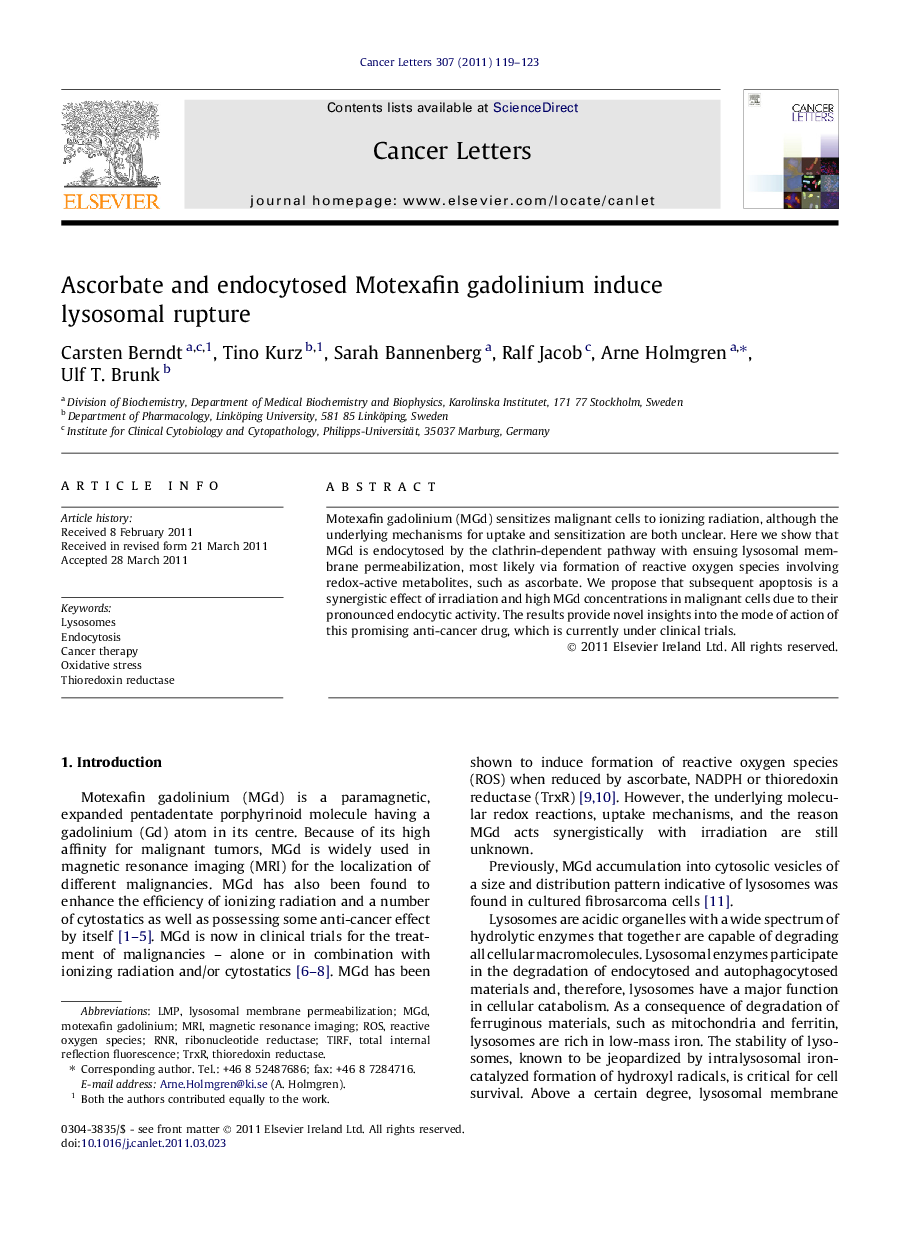| Article ID | Journal | Published Year | Pages | File Type |
|---|---|---|---|---|
| 2113635 | Cancer Letters | 2011 | 5 Pages |
Abstract
Motexafin gadolinium (MGd) sensitizes malignant cells to ionizing radiation, although the underlying mechanisms for uptake and sensitization are both unclear. Here we show that MGd is endocytosed by the clathrin-dependent pathway with ensuing lysosomal membrane permeabilization, most likely via formation of reactive oxygen species involving redox-active metabolites, such as ascorbate. We propose that subsequent apoptosis is a synergistic effect of irradiation and high MGd concentrations in malignant cells due to their pronounced endocytic activity. The results provide novel insights into the mode of action of this promising anti-cancer drug, which is currently under clinical trials.
Keywords
Related Topics
Life Sciences
Biochemistry, Genetics and Molecular Biology
Cancer Research
Authors
Carsten Berndt, Tino Kurz, Sarah Bannenberg, Ralf Jacob, Arne Holmgren, Ulf T. Brunk,
